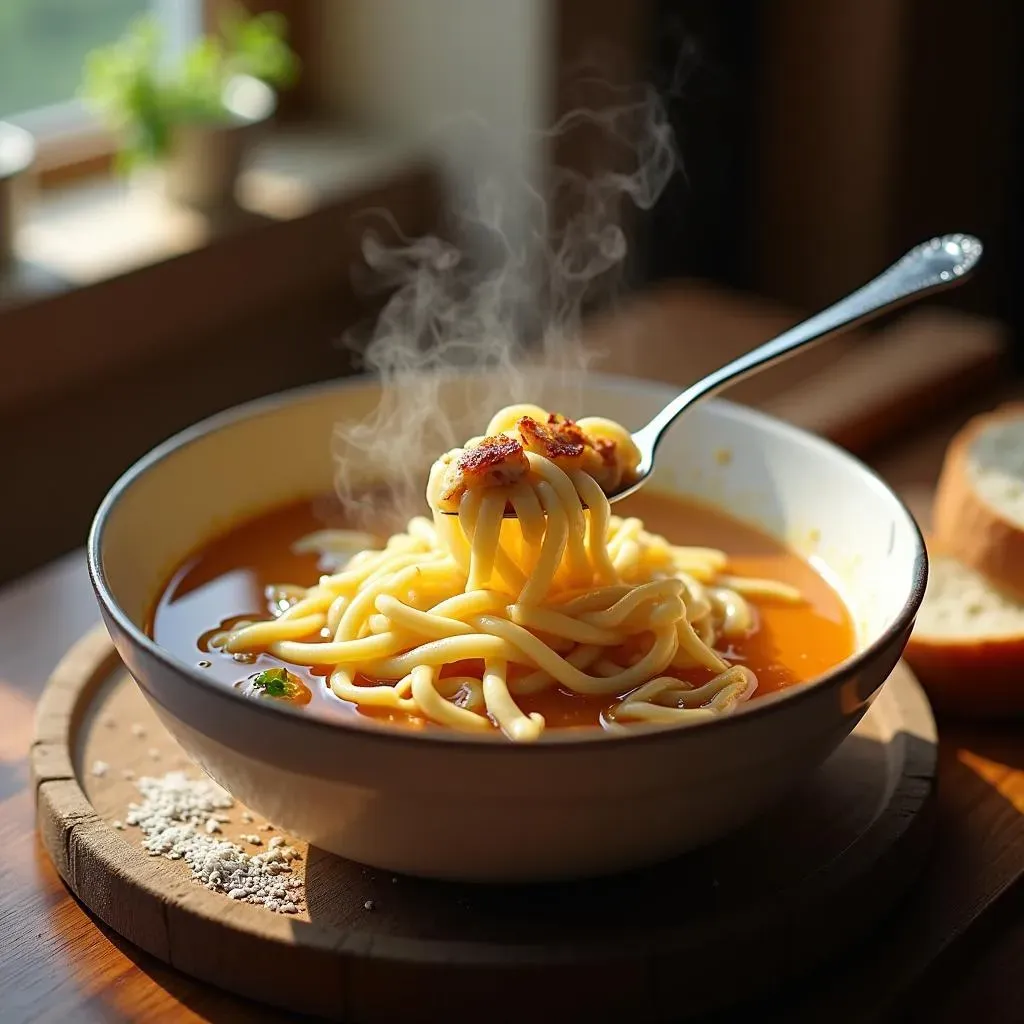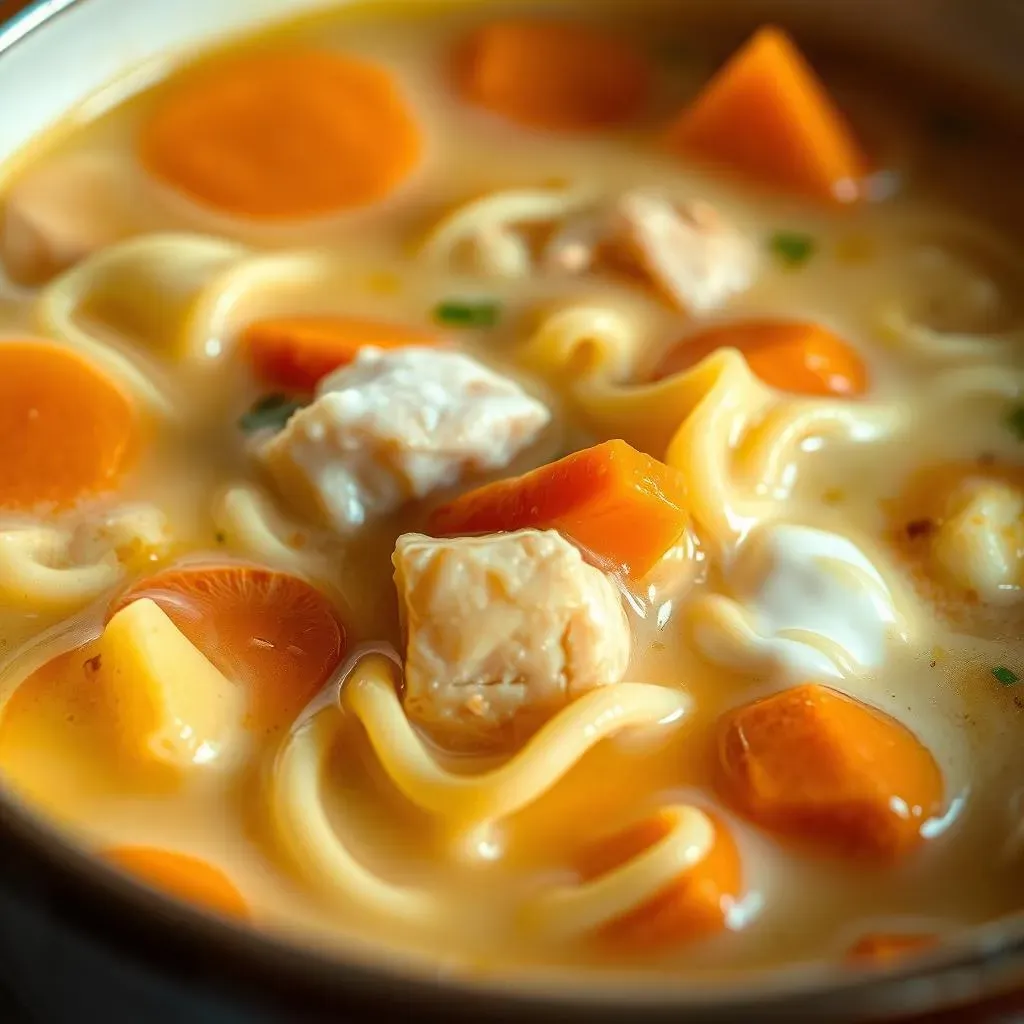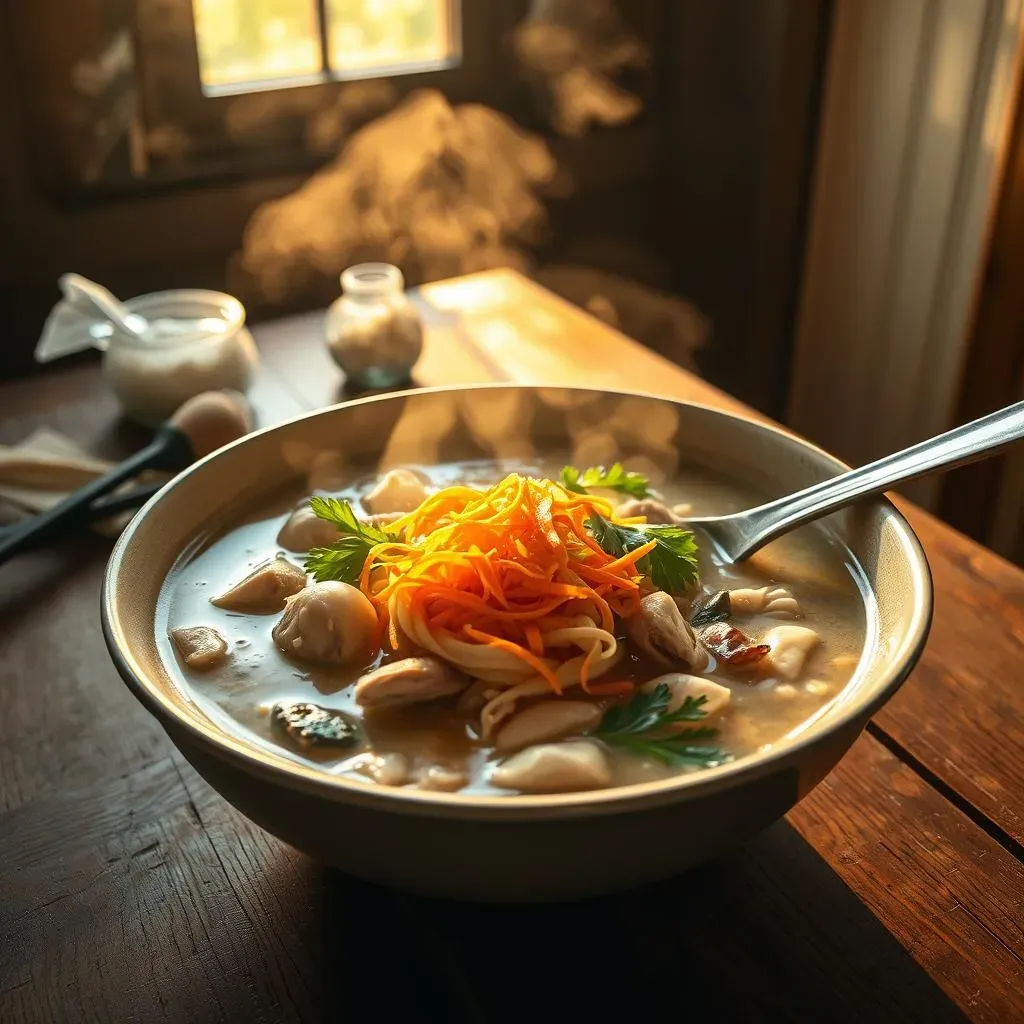Table of Contents
Ever found yourself staring at a pot of chicken noodle soup that's more broth than comforting goodness? You're not alone! Sometimes, we want that perfect, spoon-coating consistency without resorting to flour. Maybe you're gluten-free, or perhaps you've simply run out. Whatever the reason, this article is your guide to achieving that rich, thick texture in your chicken noodle soup, all without a speck of flour. We'll explore the wonderful world of alternative thickeners, from the everyday starch hiding in your pantry to the surprising power of rice. Get ready to discover how simple swaps can transform your soup into a hearty, satisfying meal. We'll tackle the "how to thicken chicken noodle soup without flour" question head-on, with easy-to-follow tips and real-world examples, so you can bid farewell to watery soup and say hello to a bowl of pure deliciousness. So, grab your ladle, and let's get cooking!
Why Skip the Flour? Exploring Alternatives for Thicker Soup

Why Skip the Flour? Exploring Alternatives for Thicker Soup
Okay, so you're making chicken noodle soup, and you want it thick, right? Flour is the old-school way to do it, sure. But let's be real, sometimes flour just isn't the best option. Maybe you're trying to avoid gluten, or perhaps you just don't want that slightly pasty texture that flour can sometimes give. I know, I've been there, staring at my soup thinking, "There has to be a better way!" Plus, flour can clump if you're not careful, leaving you with little doughy bits instead of a smooth, velvety base. So, what's a soup lover to do? Well, that’s where the fun begins! There's a whole world of alternative thickeners out there just waiting to be discovered. We're talking about ingredients that not only thicken your soup beautifully but also add their own unique flavors and textures. It's like leveling up your soup game, and trust me, you'll never look back.
Reason to Skip Flour | Benefit of Alternatives |
|---|---|
Gluten Intolerance | Many gluten-free options available |
Undesirable Texture | Often create smoother, less pasty results |
Clumping | Alternatives often mix more easily |
Starch Saviors: Cornstarch, Tapioca, and Potato Starch

Starch Saviors: Cornstarch, Tapioca, and Potato Starch
The Power of Starch
Alright, let's talk about starch, the unsung hero of thick soups. When you're ditching flour, these guys step up to the plate. Cornstarch, tapioca starch, and potato starch are like the holy trinity of gluten-free thickeners. They're all pure starch, which means they're super effective at absorbing liquid and creating that lovely, velvety texture we're after. Each one has its own quirks, though, so it's good to know what you're working with. Cornstarch is your classic go-to, easy to find and pretty reliable. Tapioca starch, also known as tapioca flour, is a bit more translucent and gives a nice sheen to your soup. Potato starch is great for a really smooth, creamy result. It's like choosing your favorite superhero, they each bring something unique to the table.
How to Use Starch Effectively
Now, here's the thing about using starch: you can't just dump it straight into your hot soup. That's a recipe for disaster – think clumps and goo. The trick is to make a "slurry" first. This just means mixing your starch with a bit of cold water until it's smooth and liquid. Then, you slowly whisk it into your simmering soup. The heat activates the starch, causing it to swell and thicken the liquid. It's like magic, but it’s actually science! Start with a small amount of slurry, and add more gradually until you get the consistency you want. Remember, it's easier to add more than to take it away. This way, you can control how thick your soup becomes and avoid any gluey surprises. It’s all about finesse, my friend, finesse.
Starch Type | Texture | Best Use |
|---|---|---|
Cornstarch | Reliable, classic | General thickening |
Tapioca Starch | Translucent, glossy | Smooth, slightly shiny soup |
Potato Starch | Very smooth, creamy | Extra creamy results |
Rice to the Rescue: How Rice Can Thicken Your Soup

Rice to the Rescue: How Rice Can Thicken Your Soup
The Unassuming Thickener
Okay, now, who would have thought rice could be a soup thickener? I know, it sounds a bit odd, right? But trust me on this. Rice isn't just for side dishes; it's a fantastic way to add body to your chicken noodle soup. When you cook rice in liquid, it releases starch, which is exactly what we need to thicken things up. It's like a secret weapon hiding in your pantry. You don't need to use any special kind of rice either. White rice, brown rice, even broken rice bits work just fine. It's super convenient, especially when you’re trying to avoid a trip to the store just for a thickener. It’s a great way to use up leftover rice too, which is a win-win in my book.
How to Make It Work
So, how do you actually use rice to thicken soup? It's pretty simple, actually. The key is to add the rice early in the cooking process, directly into the broth. As the soup simmers, the rice will cook and release its starch, gradually thickening the liquid. The longer it cooks, the thicker your soup will become. You can even use a potato masher to lightly mash some of the rice against the side of the pot to release even more starch. This is a great trick when you want to get a richer consistency. Keep an eye on it, though, because the soup can get pretty thick if you let the rice cook for too long. It’s all about finding that sweet spot where the texture is just right. And, if you like, you can remove some of the rice before serving, to avoid having too much grain in your soup.
Rice Benefit | How to Achieve |
|---|---|
Natural Thickening | Cook rice directly in the broth |
Starch Release | Simmer rice for a longer time |
Control Texture | Mash some of the rice against the pot |
Other Options: From Veggies to Dairy for a Creamier Texture

Other Options: From Veggies to Dairy for a Creamier Texture
Alright, let's move beyond starches and grains, shall we? There's a whole world of other ingredients that can add thickness and a lovely creaminess to your chicken noodle soup. I'm talking about veggies and dairy, the unsung heroes of the soup world. Pureed vegetables can add both body and flavor, while dairy products can bring richness and a velvety texture that's hard to beat. It's like giving your soup a spa day, where it emerges feeling refreshed and oh-so-luxurious. It’s all about thinking outside the box and using what you have on hand to create something truly special. Plus, it's a great way to sneak in some extra veggies, especially if you have picky eaters in the house.
So, what are we talking about exactly? For veggies, think about things like cooked carrots, potatoes, or even cauliflower. Once they're soft, you can blend them up and stir them into your soup. They’ll add a natural sweetness and a subtle thickness. For dairy, a splash of heavy cream, half-and-half, or even a bit of yogurt can work wonders. They bring a smoothness and a richness that elevates your soup to a whole new level. Just remember to add dairy at the very end of the cooking process, and don’t let it boil, or it might curdle. The trick is to introduce these elements slowly, tasting as you go, until you reach that perfect balance of flavor and texture. It's all about playing around and finding what works best for your taste.
Thickener Type | Examples | Texture |
|---|---|---|
Pureed Vegetables | Carrots, potatoes, cauliflower | Smooth, slightly sweet |
Dairy Products | Cream, half-and-half, yogurt | Rich, velvety |
